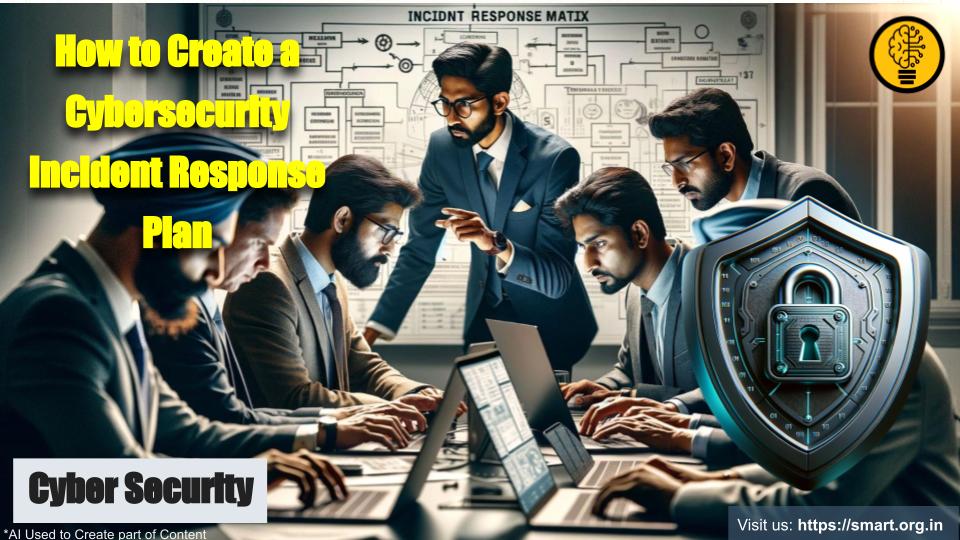In the rapidly evolving landscape of digital technology, where the next cybersecurity threat looms just around the corner. The importance of a robust Cybersecurity Incident Response Plan (IRP) cannot be overstated. For you, the stewards of your organization’s future. This guide is tailored to equip your businesses with the armour to not only withstand but swiftly counteract any cybersecurity adversities.
The Imperative of Preparedness
The digital age while brimming with opportunities, also harbours sophisticated threats that evolve by the minute. For a business to maintain its integrity and ensure the continuity of operations, understanding and preparing for these threats is imperative.
- Rapid Evolution of Threats: Cyber threats are not static; they evolve, demanding continuous vigilance.
- Minimization of Impact: A well-conceived IRP can significantly reduce both the immediate and long-term repercussions of a breach.
Laying the Foundations
The first stride towards cybersecurity resilience involves laying down a robust foundation, beginning with assembling a diverse and skilled Cybersecurity Incident Response Team.
Assemble a Versatile Incident Response Team
- Cross-functional Expertise: Your team should be a tapestry of skills, encompassing IT, legal, HR, and communications, ensuring a holistic approach to incident management.
- Clearly Defined Roles: Each team member should have a clear understanding of their responsibilities, ensuring a synchronized response in times of crisis.
Conduct a Thorough Risk Assessment
- Identify Potential Threats: Understanding the landscape of possible threats allows for more targeted defenses.
- Asset Prioritization: Not all assets are created equal; identify and prioritize your protection efforts based on the value and risk associated with each asset.
Crafting the Strategy
With the foundations in place, the next phase involves the meticulous crafting of your Cybersecurity Incident Response Plan.
Establish Clear Communication Channels
- Internal and External Coordination: Determine the flow of information within the organization and with external stakeholders, ensuring clarity and efficiency in communication.
- Stakeholder Engagement: Maintain protocols for engaging with all relevant stakeholders, keeping them informed and involved as appropriate.
Categorize Incidents for Efficient Response
- Incident Typology: Classify incidents based on their nature and severity, facilitating a more structured and effective response mechanism.
Develop Comprehensive Response Procedures
- Step-by-Step Guidelines: Outline detailed procedures for managing different types of incidents, covering assessment, containment, eradication, and recovery.
- Incorporate Detection and Analysis Tools: Employ advanced tools for threat detection and analysis, ensuring your organization remains a step ahead of potential threats.
Empower Through Training and Awareness
The human element is often the weakest link in cybersecurity. Address this vulnerability through continuous training and awareness programs.
- Regular Training Sessions: Equip your team and employees with the knowledge and skills to identify and respond to threats.
- Organizational Cybersecurity Culture: Foster a culture of cybersecurity awareness, making it a cornerstone of your organizational ethos.
Test, Learn, Adapt
The efficacy of your IRP is not set in stone; it must be tested, evaluated, and refined.
- Simulation Drills: Regular drills and simulations will test the robustness of your plan, revealing areas for improvement.
- Dynamic Updating: The cybersecurity landscape is in constant flux; your IRP should be equally dynamic, evolving based on lessons learned and emerging threats.
In the Eye of the Storm: Responding to Incidents
When an incident occurs, the theoretical becomes reality. Your response in these critical moments can define the future trajectory of your organization.
Swift Identification and Reporting
- Rapid Recognition: Time is of the essence; quickly identify and document any breach or threat.
- Efficient Reporting Mechanisms: Ensure incidents are promptly reported to the designated response team.
Containment to Minimize Spread
- Isolation of Systems: Prevent the spread of the threat by isolating affected systems, safeguarding the integrity of your wider network.
- Implement Interim Measures: Apply short-term solutions to mitigate immediate damage, buying time for a more comprehensive fix.
Comprehensive Eradication and Recovery
- Thorough Cleansing: Ensure the complete removal of the threat from all systems.
- Restoration: Leverage backups to restore systems and data, minimizing operational downtime.
Reflective Post-Incident Analysis
- Incident Debriefing: Conduct a thorough analysis of the incident to understand its root causes and the effectiveness of your response.
- Iterative Improvement: Update your IRP based on these insights, turning each incident into a learning opportunity.
For leaders at the helm of today’s corporations, crafting a Cybersecurity Incident Response plan transcends the mere formulation of a procedural document. It’s about fostering a proactive security posture a culture of continuous learning. An unyielding commitment to safeguarding the digital assets that are the lifeblood of your organization. In doing so, you not only protect your immediate interests but also contribute to the broader ecosystem’s resilience against the ever-present spectre of cyber threats.
Smart Group India stands at the forefront of empowering businesses to fortify their digital fortresses. Offering tailored cybersecurity solutions that pave the way for robust Cybersecurity Incident Response strategies. With a blend of cutting-edge technology and deep domain expertise. They guide companies in implementing comprehensive cybersecurity plans that are both resilient and adaptable. Their commitment to enhancing cyber resilience ensures businesses are well-equipped to navigate the complexities of the digital landscape with confidence and agility.


In conclusion, we at Smart Group hope this article has provided you with valuable insights and actionable strategies. Smart Group India Incubation provides a nurturing environment for startups, offering comprehensive support and resources to foster growth and innovation. With access to expert mentorship, state-of-the-art infrastructure, and networking opportunities, startups can thrive in their journey from ideation to market launch. Explore our services in DevOps consultancy, IoT solutions, and cybersecurity to leverage cutting-edge technology for your business success. Join us to embark on a transformative journey towards entrepreneurial excellence. For further information and a deeper dive into this topic, we encourage you to explore the following resources. These links offer a wealth of knowledge and expert opinions that can enhance your understanding and assist you in applying these concepts effectively.
Startup Policies Govt. Of India
Startup News Sites
Publications
Research Papers